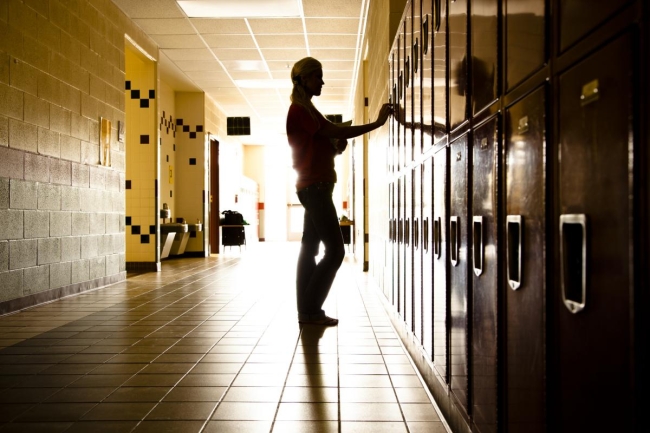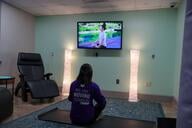You have /5 articles left.
Sign up for a free account or log in.

iStock/Getty Images
For high school students, this year has been anything but normal. Many have taken their classes remotely or in hybrid configurations -- modalities that are new to many in K-12 education.
Potential learning loss from this past year has been at the center of debates around school reopening across the country. But for higher education, the question is more narrow: Will students enter college less academically prepared than previous semesters? And if so, what can institutions do to help?
Learning loss is usually studied mostly at the K-8 grade level and measured with annual standardized tests. Before the pandemic, researchers mostly focused on learning loss over summer vacations. When young students would return in the fall, some wouldn't be able to demonstrate skills they had mastered in the spring. With the pandemic, some in education have taken a more expansive view of the phenomenon, choosing to look at missed opportunities, rather than only "lost knowledge."
Data on high school students’ learning, both before and during the pandemic, are more scant, so it’s difficult to tell the true impact of the pandemic disruption. But some education experts suspect that -- even if students aren’t “losing” information in the ways we typically think about learning loss -- they may still be missing out on educational opportunities that could prepare them for college.
Some school districts and states are seeing decreased engagement, attendance, and grades among students across the board, including at the secondary level, said Jennifer McCombs, director of behavioral and policy sciences at the RAND Corporation, where she focuses on children and youth. She said attendance problems may be even more severe in the upper grades.
Carolyn Heinrich, a professor of public policy and education at Vanderbilt University, said even if students are showing up to class, they may not be absorbing content at their previous levels. While there are best practices and techniques around teaching in a digital environment, that type of training wasn’t delivered to many teachers.
“[As a teacher] your interactions with students in person make it a little bit easier for you to gauge their understanding, their level of engagement in class discussion, their expressions, their participation,” Heinrich said. “Students may not be fully engaging, and that’s where learning loss can happen. If they’re not fully engaged, they may not be fully understanding everything.”
Instructors can also face challenges if they’re teaching to a split classroom, where some students are in person and some are online. Students learning online generally tend to be quieter, Heinrich said, and may not speak up if they don’t understand something. Students can struggle with internet and technology access or have an intrusive home environment.
That type of learning loss stemming from missed opportunities probably isn’t felt by students equally, Heinrich said. Students who have adults at home or in their community who can help with class work or find additional learning resources may be able to make up for a difficult classroom experience.
“Students who don’t have those additional home-based resources to make up for what they might be losing in their classroom environments or educational setting that they’re in, they may be less well prepared,” she said.
Students whose parents didn’t finish high school or those who live far from community resources may lack some of that at-home help. All of this means that students who decide to pursue higher education next year may not be where they would otherwise be academically.
“It may be the case that we have more students who are not opting out of coursework due to AP scores,” said McCombs. “[Colleges] may want to think about whether they’re anticipating a higher demand for those entry basic courses.”
More students may find themselves in remedial or developmental courses to accelerate learning.
J. B. Buxton, president of Durham Technical Community College in North Carolina, said that college officials aren't positive what they're going to see this fall, but they are tentatively preparing for an increase in the number of students who need additional help.
"We certainly expect -- based on experiences in the past year and what we’re hearing from our K-12 partners -- that students who are taking dual-enrollment classes with us and students coming to us right from high school are likely to have some academic challenges that may have increased from a normal year," he said.
Right now, the college is considering a summer program or academy for students who need some extra help.
Buxton also said it's possible that, while more students may be a bit behind this year, they won't all find themselves on the remedial or developmental track. Durham Tech uses high school grade point average to place students into those programs, but because school districts and high school teachers have shown a fair amount of grace with grading this year, some of those students may now be placed into standard courses. The college's early alert infrastructure, which signals any early problems with students' academic progress, will likely be even more important this coming year, Buxton said.
"That early alert system is going to be important to make sure they’re not getting too far into the semester off-track, especially where it may just be gaps from the last year of instruction showing up," he said.
Bernard Polnariev, associate vice president for academic affairs at Union County College in New Jersey, said it's possible that students who took their high school classes remotely this past year may be actually better prepared for college. They may have better time management, technological and resilience skills, he said.
"Even if a student doesn't feel prepared, I think they'll be well served by all the support services that we have at the institution," he said.
Lindsay Daugherty, a senior policy researcher with RAND who specializes in education, said that colleges and universities could consider reforming any remedial offerings to help students progress. Often remedial classes are not for credit. They can delay students' progress toward graduating and can impact retention if students feel discouraged or stigmatized for their remedial work.
Institutions that instead put those students in standard courses and mandate concurrent tutoring, office hours or additional classroom time could see greater student success, she said. A recent study from Daugherty’s team found that -- in an experimental model in Texas community colleges -- this kind of remediation increased a student’s likelihood of completing their first college-level English course in one year by 24 percentage points.
At Durham Tech, which uses a similar corequisite model, Buxton said that the program seems promising, but the college doesn't have enough data yet to evaluate the program. Union County College has used the corequisite model before with grant funding. Students who tracked into remedial education but then placed into a credit-bearing course at Union passed at the same rate as other students, Polnariev said.
Experts said that beyond purely academics, colleges should consider supporting students’ mental health and financial needs, with special attention to the summer before freshman year.
“Working hard to be aware of and address these other stressors for students,” said Heinrich, “so they can focus on learning when it’s taking more effort from them to do -- that is really important.”




